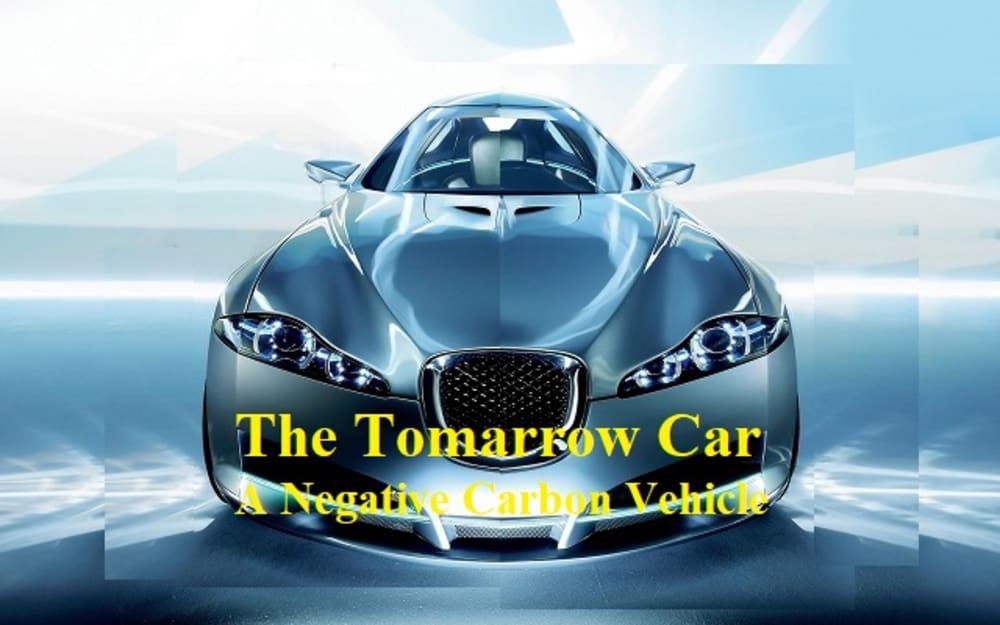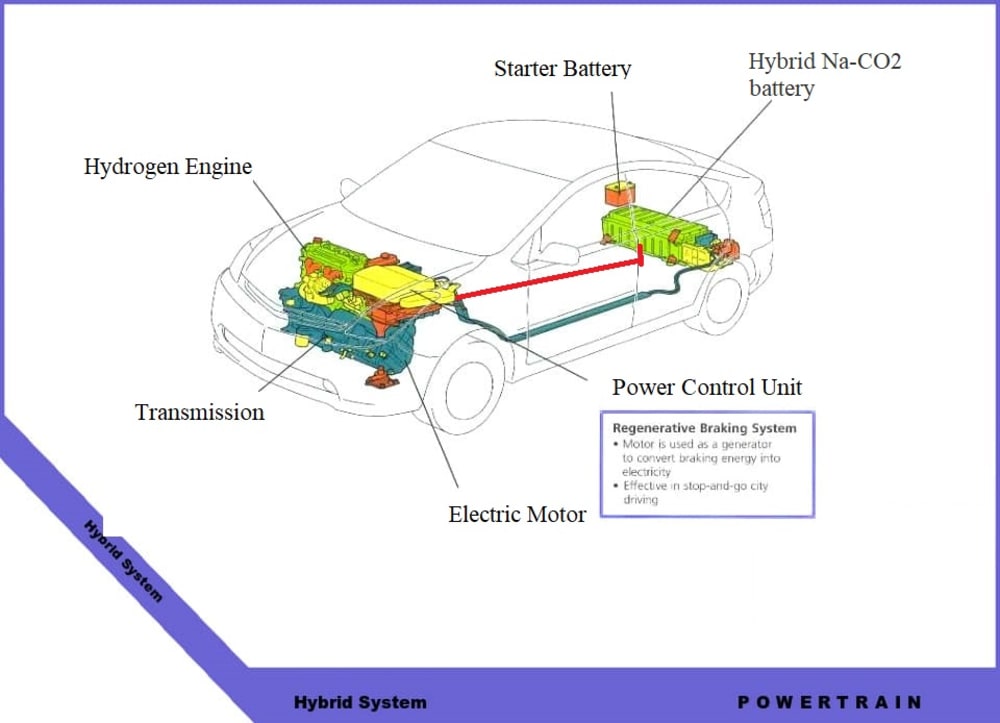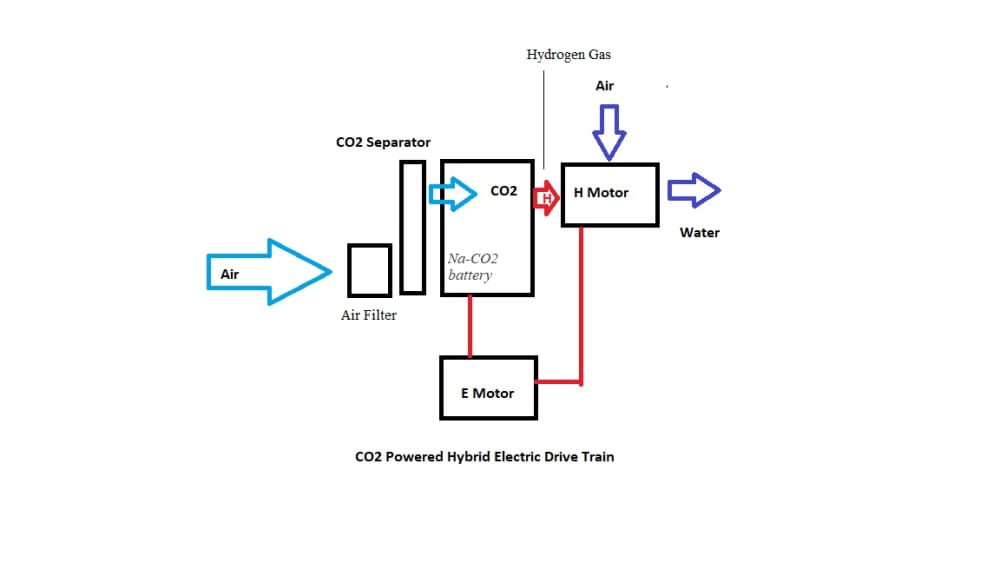Imagine an automobile that not only produces no pollution but also cleans the air as you drive it. This is The Tomorrow Car. The Tomorrow Car (TTC) is an Electric/Hybrid drive train that consumes Carbon Dioxide (CO2) from the atmosphere and produces Hydrogen gas and baking soda as byproducts. The hydrogen gas is consumed by an Internal Combustion (IC) Engine that consumes Hydrogen and Oxygen producing water as a by product. Both the Battery and the IC Engine produce electricity to power the vehicle. This vehicle drive train starts with a a Hybrid Na-CO2 battery System that consumes CO2 directly from the atmosphere. This process produces electricity and hydrogen gas. The electricity is fed to an electric motor to power the vehicle. In addition the process also produces Hydrogen Gas which is fed into a small internal combustion engine to produce additional electricity. This electricity is also fed to the electric motor. The waste products are water and baking soda.
Just about every carmaker on Earth is investing vast amounts of resources into the development of electric vehicles. But is this the technology of tomorrow? A fully electric vehicle produces 4,000 pounds per year of CO2. While certainly better than gasoline IC engines it is not the ultimate solution. Question: Is is conceivable that an automobile drive train could be developed that not only didn’t produce any CO2 but actually reduced existing CO2? The answer is YES!
The goal of the TTC project is to create an automotive drive train that can be cost effective to manufacture while removing existing CO2 from the atmosphere. The project is based on a Hybrid Na-CO2 battery that consumes CO2 to produce electricity and Hydrogen to drive the vehicle. The development of a Hybrid Electric/Hydrogen drive train that consumes CO2 would be “game changer” for the planet. While the basic technology exists, such a project would be a very challenging engineering project.
The TTC would operate basically the same as most hybrid vehicles, the difference is that the TTC consumes CO2 as the fuel rather than hydrocarbons. There are two huge differences between the TTC and other technologies. First, it produces no CO2 and secondly it actually consumes CO2. So, not only does it reduce CO2 pollution it reduces existing CO2 levels in the atmosphere. What other technology can claim that? A Hybrid Na-CO2 System, is basically a big liquid battery. A sodium metal anode is placed in an organic electrolyte, while the cathode is contained in an aqueous solution. The two liquids are separated by a sodium Super Ionic Conductor (NASICON) membrane.
The Process
- Separate CO2 from atmosphereic air using a membrane.
- Pump the gasous CO2 ino the battery
- Produce electricy in the battery.
- Extract Hydrogen gas from the battery
- Combust the Hydrogen gas with atmosphereic Oxygen in a small internal combustion engine. (by-product water)
- Power the vehicle
Like this entry?
-
About the Entrant
- Name:Danny Jones
- Type of entry:individual
- Software used for this entry:Microsoft Paint
- Patent status:none








